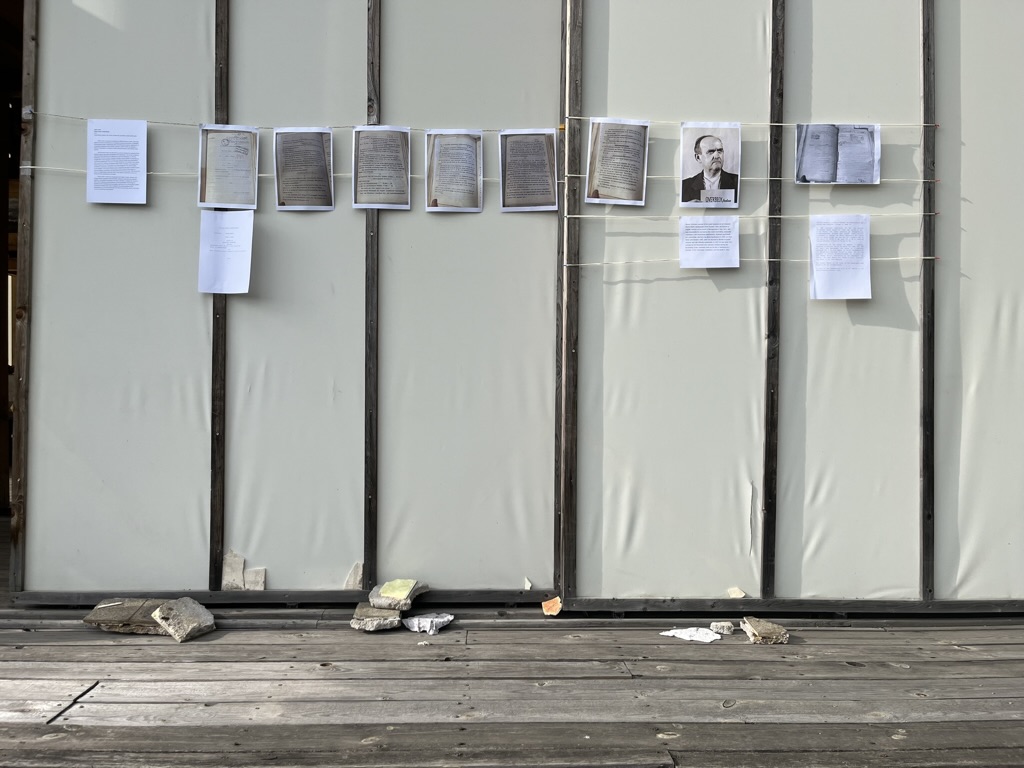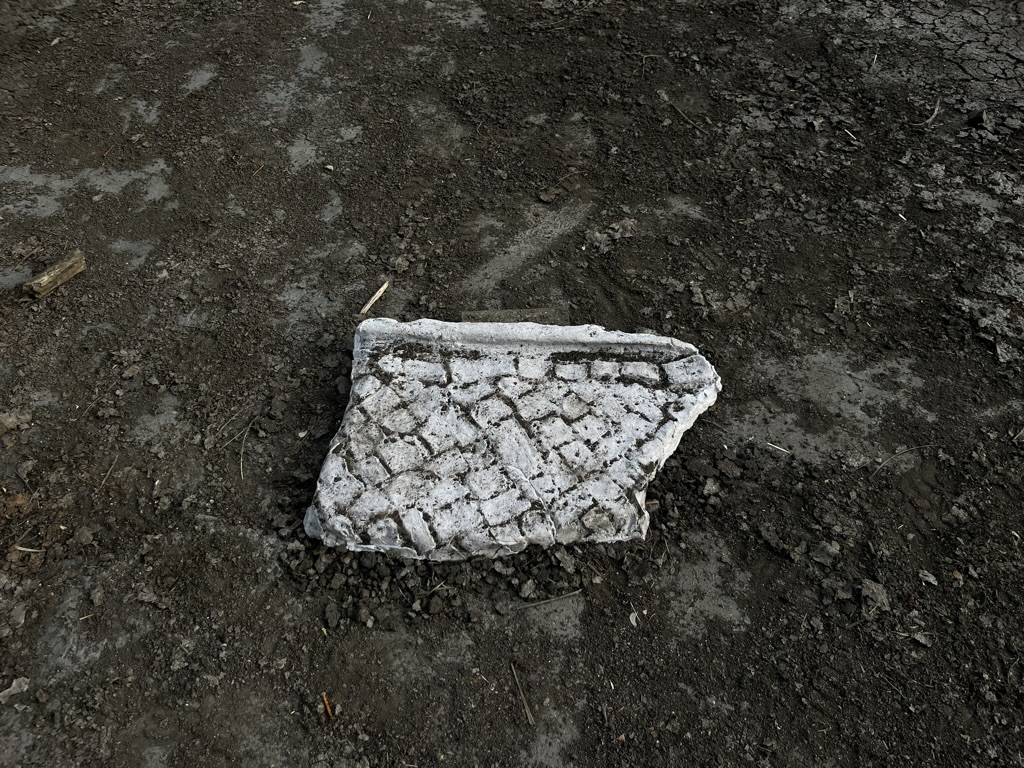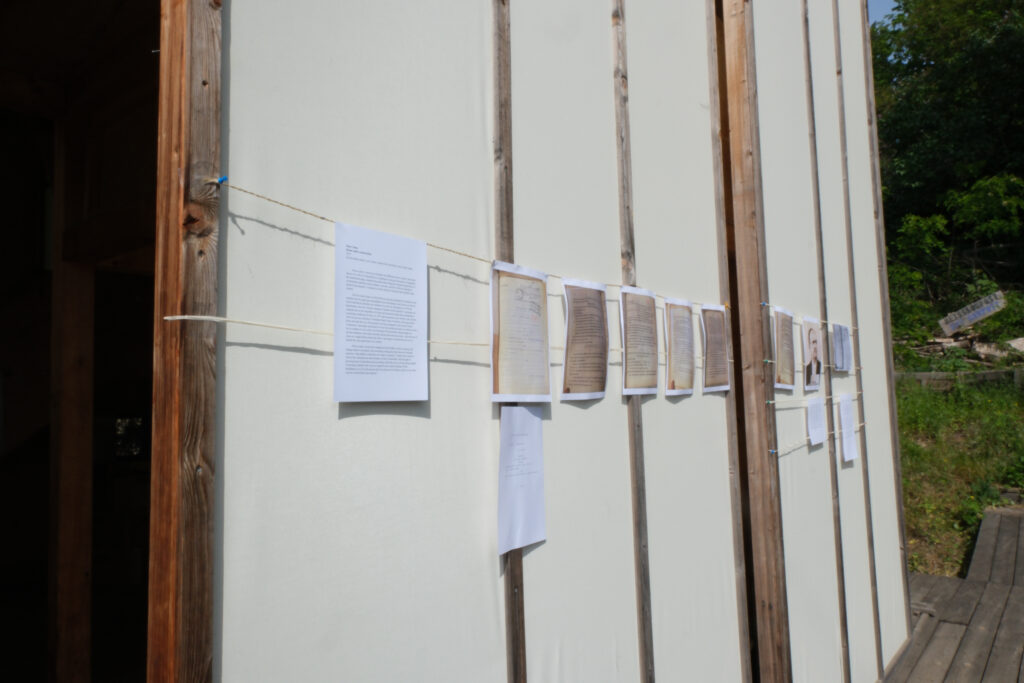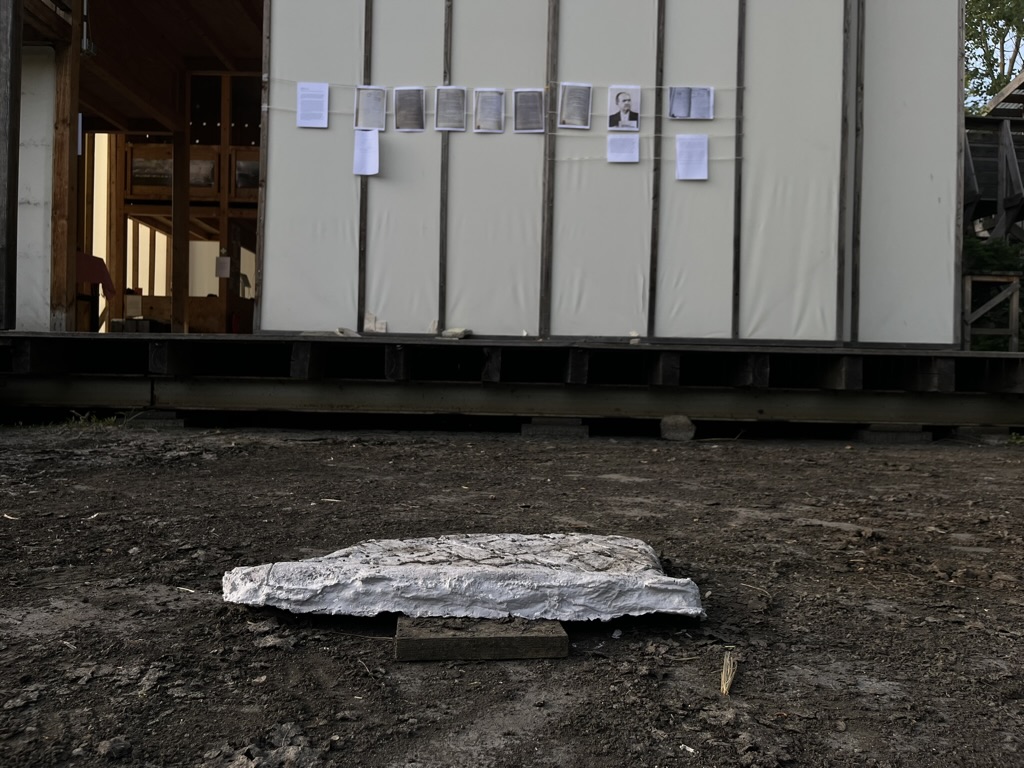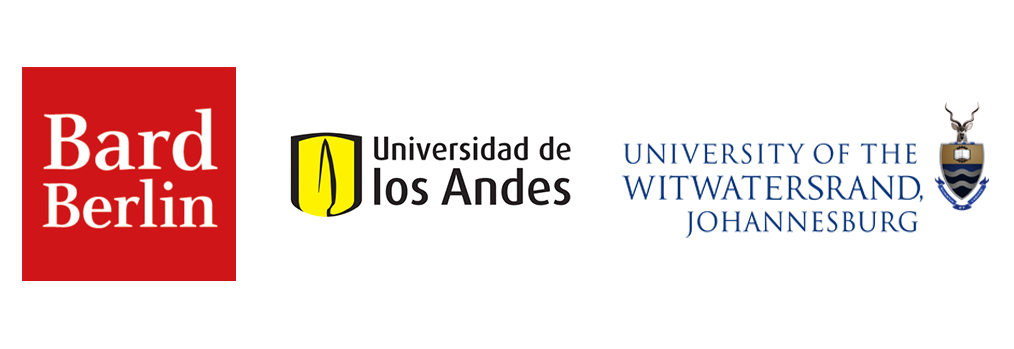Elan Cohen
House under construction
2025, Bard College Berlin
Mixed media: plaster, soil, stones, ceramic tile, styrofoam, acrylic paint, paper
House under construction emulates the different rooms, corners, and empty spaces of a villa in Lichterfelde as it undergoes total gut renovations. It highlights the transitional stage, emphasizing rather than hiding the temporal significance of construction materials such as plaster, concrete, and tile, which are intended to preserve the property’s existence as both a physical structure and a valuable status symbol.
The five-story home was first built as a private residence by German-Jewish architect and my great-great-great-grandfather, Erick Kaufmann, who lived in it with his wife, Frida Block, and their two children, Eva and Lily Kaufmann. In 1934, the Kaufmanns were one of many bourgeois German-Jewish families to preemptively emigrate due to the imposition of social and financial hurdles that contributed to worsening conditions for Jews. In 1937, their properties were forcibly sold, and the villa was given to the director of Dresdner Bank Gustav Overbeck, who enjoyed the house throughout the war. The property was then managed by the Jewish Claims Conference, renovated, and leased to Freie Universität and used as residence dorms for its students. It was sold to the Protestant Church before being bought as a private residence, renovated, and then altered and sold twice more. After the last 20 years as a single-family home, the villa is once again a construction site as it is turned into four apartments to be rented. House under construction emphasizes the fluidity of time, memory, and change relative to property and ownership, asking the more than ever relevant question, “What defines ownership over land or property?” I implore the viewer to look at the continued use and existence of this Lichterfelde villa through its growing layers of alteration and ownership, and see it as a living thing capable of having an identity that is just as shaped by the initial residence of the Kaufmanns as it is by the present-day lives that are lived there, and by every other version of itself that it has endured.
